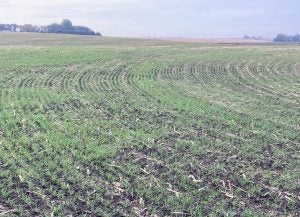It’s Dairy Month, but for U.S. dairy farmers and businesses, every day is about dairy, protecting our planet with ethical, responsible, economic, and environmentally sound practices and technologies.
The U.S. Dairy Sustainability Awards program recognizes seven individuals, businesses, and partnerships that have gone above and beyond the call of duty. The Innovation Center for U.S. Dairy has been recognizing outstanding stewardship since 2012.
This year’s focus aligns with the 2050 Environmental Stewardship Goals which include the Net Zero Initiative of being carbon neutral by 2050.
“As a dairy farmer, I understand the importance of community and being a true caretaker of the environment that surrounds our farm and these winners demonstrate these values to their neighbors every day,” said Marilyn Hershey, Pennsylvania dairy farmer and chair of the Dairy Management Inc. board of directors.
“These all are solution- and results-oriented businesses who are not only making meaningful contributions locally but to the U.S. dairy industry overall.”
2022 Outstanding Dairy Farm Sustainability Award Winners
Deer Run Dairy — Kewaunee, Wisconsin
Partners Duane Ducat, Derek Ducat, and Dale Bogart have implemented numerous conservation practices to protect water and improve soil health.
The partners utilized cover crops on 100 percent of their cropland, minimized antibiotic use, and are utilizing feeding trials on their 1,850-cow operation to reduce methane gas production.
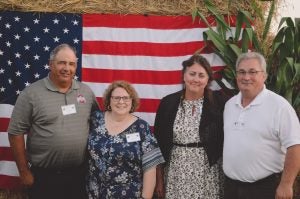

Grayhouse Farms Inc. — Stony Point, North Carolina
Jimmy and Andy Gray’s dairy was built five years ago focusing on “conservation and efficiency by design” with dozens of water and soil conservation practices in use. Flush manure and sand separation systems allow the farm to reuse sand almost 100 times on their 1200-cow operation.
Facilities maximize cow comfort while soil conservation practices conserve natural resources including wildlife conservation.
“We understand that we hold the title of this property, but we are the caretakers, and we must be vigilant in how we farm,” says Jimmy.
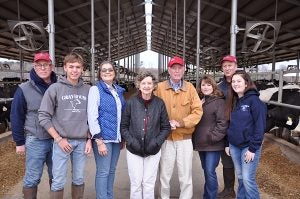
Steve and Cheryl Schlangen Dairy Farm — Albany, Minnesota
With a mindset of continuous improvement, the Scholangens utilize more than 30 conservation practices on their dairy including LED lights, cover crops, and manure-stacking slabs that prevent leaching into water supplies. The farm also uses. Manure injection systems that efficiently use less time, less fuel, and less commercial fertilizer.
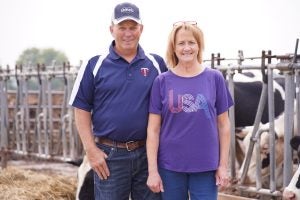
Bar 20 — Kermen, California
Bar-20 has cut their demand for electricity by 75 percent with LED lights in all of their barns while solar array installation offsets power usage. The farm is also capturing methane with a dairy digester from their 7,000-cow herd to power a feed mixing system and over 17,000 electrical vehicles per year. Bar 20 has replaced diesel usage, reduced methane production, and reduced smog emissions by 90 percent.

Outstanding Dairy Processing Sustainability
Milk Specialties Global — Monroe, Wisconsin
A whey processing project at Milk Specialties Global reduced environmental impact while feeding athletes and animals around the planet. Doubling their plant capacity, 240,000 fewer miles were traveled by truck, about 48k000 gallons of diesel fuel were saved, and. GHG emissions were reduced by 486 metric tons. In addition, 2.9 million gallons of water were reclaimed and returned to local watersheds.
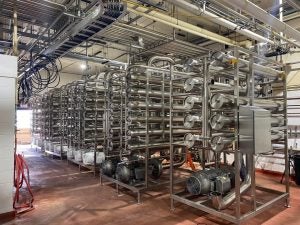
Outstanding Community Impact
Maryland & Virginia Milk Producers
A community of more than 900 dairy farm families, MDVA has paid out over $19 million in funds to improve farm sustainability. Volunteers and partners have assisted with planting projects and trash pick-ups to protect waterways beyond their farms.
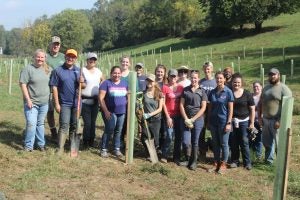
Outstanding Supply Chain Sustainability
Bel Brands, Land O’Lakes Inc., Boadwine Dairy
This multi-year program demonstrates the value of feed production practices that improve soil health and reduce greenhouse gas emissions. Utilizing sustainable farming practices, reducing dairy’s environmental footprint and providing cost incentives, resources and expertise has improved soil health on dairy farms in two regions ranging from 450-2,000 cows.
